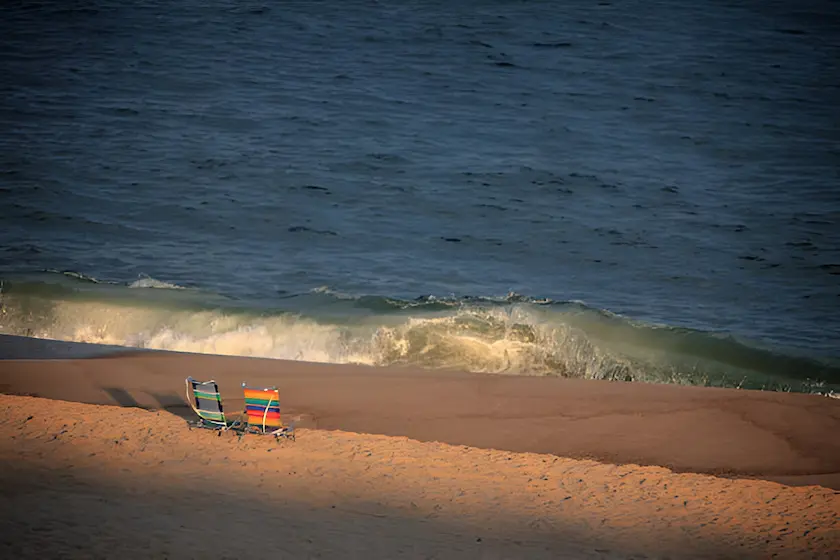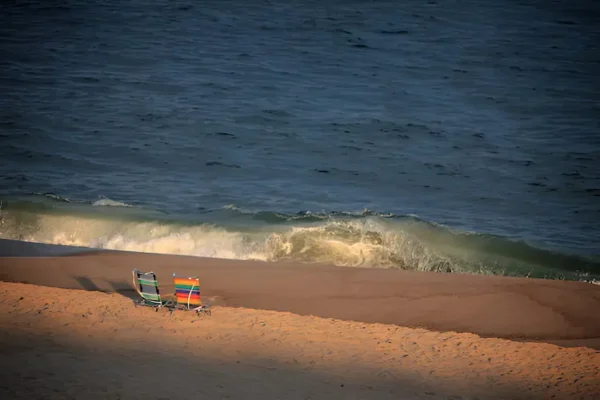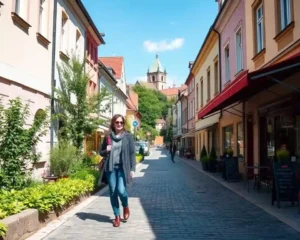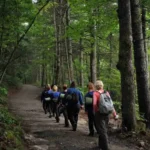LongHouse Reserve nestled in East Hampton, New York, is not just a garden or an art gallery. It is a unique blend of art, culture, and nature that offers visitors an unparalleled experience. This enchanting reserve spread across 16 acres, is the brainchild of Jack Lenor Larsen, an internationally acclaimed textile designer. His vision was to create a space where art and nature coexist harmoniously. Visitors are invited to exploring the lush gardens, encounter thought-provoking sculptures, and be inspired by the creative genius behind the project. Whether you are an art lover, a nature enthusiast, or someone looking for a serene escapes from the hustle and bustle of daily life, LongHouse Reserve is a must-visit destination. This traveler’s guide will explore the best ways to experience LongHouse Reserve, from its history to what you can expect during your visit.

Brief History of LongHouse Reserve
LongHouse Reserve was founded by Jack Lenor Larsen in 1991. Larsen a celebrated textile designer, was inspired by his travels worldwide. He envisioned a place embodying the artistic and cultural diversity he had encountered. The reserve is modeled after Larsen’s home and is inspired by Japanese architecture. Like the gardens the house is an art piece designed to blend with its natural surroundings. Over the years the reserve has grown to include over 60 sculptures and installations, making it a living museum where art and nature come together in a dynamic, ever-changing environment.
Gardens: A Living Work of Art
The gardens at LongHouse Reserve are a major attraction, offering a diverse range of flora that changes with the seasons. As you wander the reserve, you’ll encounter everything from bamboo groves to wildflower meadows. Each garden area has been carefully designed to complement the sculptures within it, creating a seamless blend of art and nature. Some of the most notable gardens include the Red Garden, which features vibrant red foliage and flowers, and the Peter’s Pond, a serene water feature surrounded by lush greenery. The gardens provide a perfect backdrop for the art installations, enhancing the overall experience for visitors.
Sculptures and Art Installations
Art lovers will be in awe of the wide array of sculptures and installations that dot the landscape of LongHouse Reserve. The sculptures range from the abstract to the figurative, each carefully placed to interact with its surroundings. Some of the most famous works include Buckminster Fuller’s “Fly’s Eye Dome,” Yoko Ono’s “Play It By Trust,” and Willem de Kooning’s “Reclining Figure.” These pieces are not only add to the aesthetic appeal of the reserve but also provoke thought and reflection. The art installations are regularly rotated so no two visits to LongHouse Reserve are the same. This dynamic aspect of the reserve keeps it fresh and exciting for first-time visitors and returning patrons.
Special Events and Programs
Throughout the year LongHouse Reserve hosts various special events and educational programs. These events range from art exhibitions and musical performances to lectures and workshops. The reserve is particularly known for its seasonal celebrations, such as the annual summer benefit, attracting artists, philanthropists, and art lovers worldwide. The educational programs are designed for all age groups and include activities like garden tours, art classes, and cultural talks. These events provide a deeper understanding of the art, culture, and natural beauty that make LongHouse Reserve such a unique destination.
Planning Your Visit
When planning your visit to LongHouse Reserve, it is important to consider the best time to go, the logistics of getting there, and what to expect during your visit. The reserve is open from late April to mid-November, with the peak season being the summer months. The gardens are in full bloom during this time, and the reserve hosts most of its events. However, visiting in the spring or fall it can also be a wonderful experience, as the changing seasons bringing different colors and moods to the gardens.
Getting There
LongHouse Reserve is at 133 Hands Creek Road in East Hampton, New York. The easiest way to reach the reserve is by car. If you are coming from New York City, the drive takes about two and a half hours. There is ample parking available on-site. Alternatively, you can take the Long Island Rail Road to East Hampton and then a taxi to the reserve.
What to Bring
Comfortable walking shoes are a must, as you will walk a lot through the gardens. Bringing a hat, sunscreen, and water is also a good idea, especially if you are visiting during summer. Photography is encouraged, so remember your camera or smartphone to capture the stunning scenery and art.
Admission and Tours
The entrance fee for LongHouse Reserve varies depending on the time of year and whether there are any special events. Guided tours are available and highly recommended, because they provide valuable insights into the art and design of the gardens. For those who prefers to explore independently, self-guided tours are also an option, with informational brochures at the entrance.
Tips for Making the Most of Your Visit
To fully appreciate LongHouse Reserve, it is worth exploring the grounds. Start with the gardens, where you can immersing yourself in the natural beauty and discover the many hidden sculptures. Make sure to take a moment to relax by one of the ponds or in one of the quiet garden nooks. From there, explore the various art installations, taking time to read the information provided about each piece. If you are visiting during an event, plan to stay for the duration to enjoy all the reserve offers.
Conclusion: Why LongHouse Reserve is a Must-Visit
LongHouse Reserve offers a unique experience beyond the typical garden or art museum. It is a place where art and nature unite perfectly, providing visitors with a space for reflection, inspiration, and enjoyment. Whether you are an art enthusiast, a nature lover, or simply looking for a peaceful retreat, LongHouse Reserve has something to offer. Its rich history, stunning gardens, and thought-provoking art installations make it a destination worth visiting. So, next time you are in East Hampton, include LongHouse Reserve on your itinerary. It is an experience you would not forget.
FAQs
Yes! Guided tours are available and highly recommended. They provide in-depth information about the reserve's gardens, sculptures, and history. Yes! Photography is encouraged at LongHouse Reserve. It is a great way to capture the beauty of the gardens and the art installations. A visit to LongHouse Reserve typically takes about two to three hours, but you can easily spend more time exploring the gardens and art installations in depth. Yes! LongHouse Reserve is accessible to people with disabilities. There are paved paths throughout the gardens, and assistance is available upon request.
Are guided tours available at LongHouse Reserve?
Can I take photographs at LongHouse Reserve?
How long does a visit to LongHouse Reserve typically take?
Is LongHouse Reserve accessible for people with disabilities?








